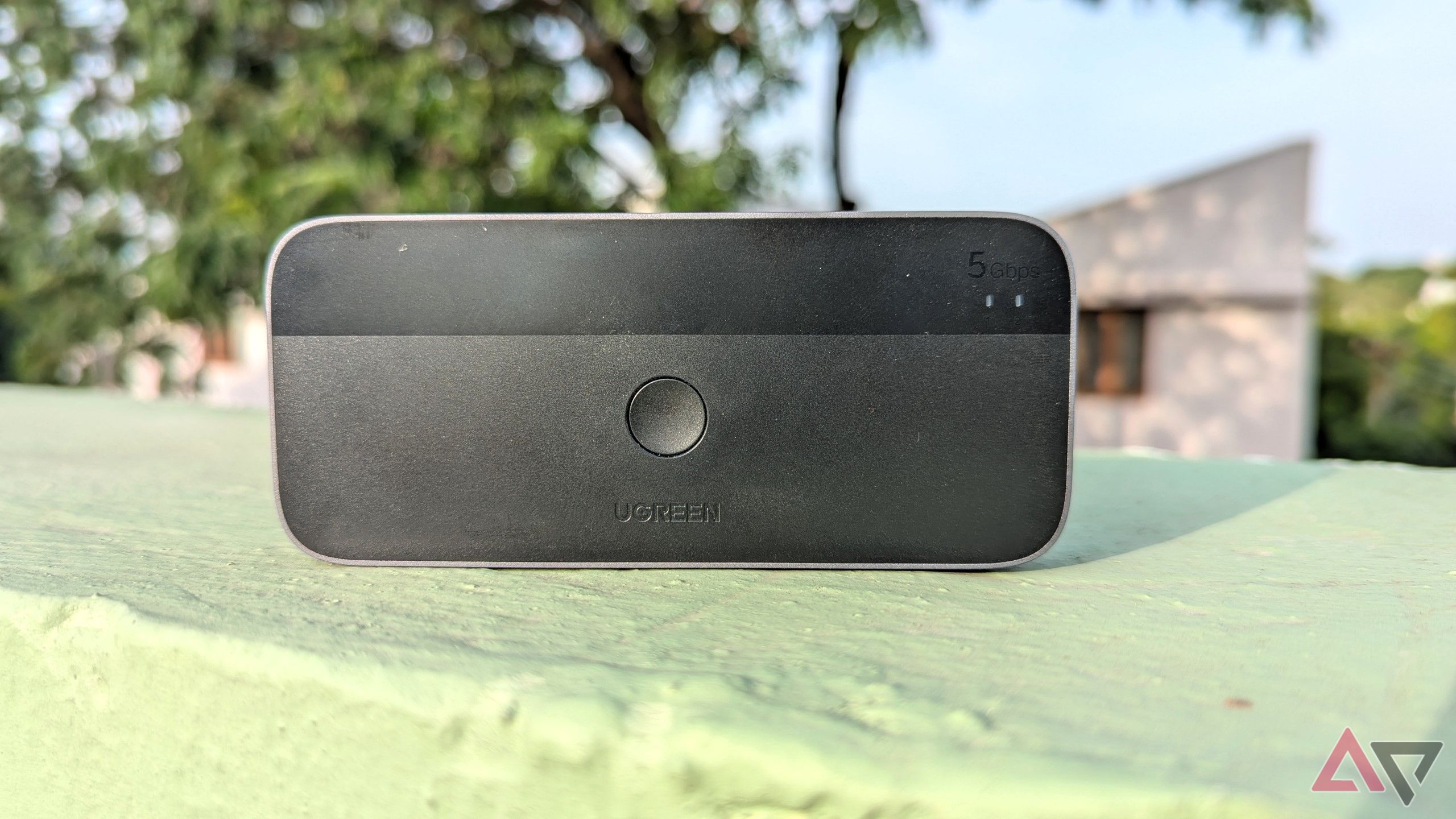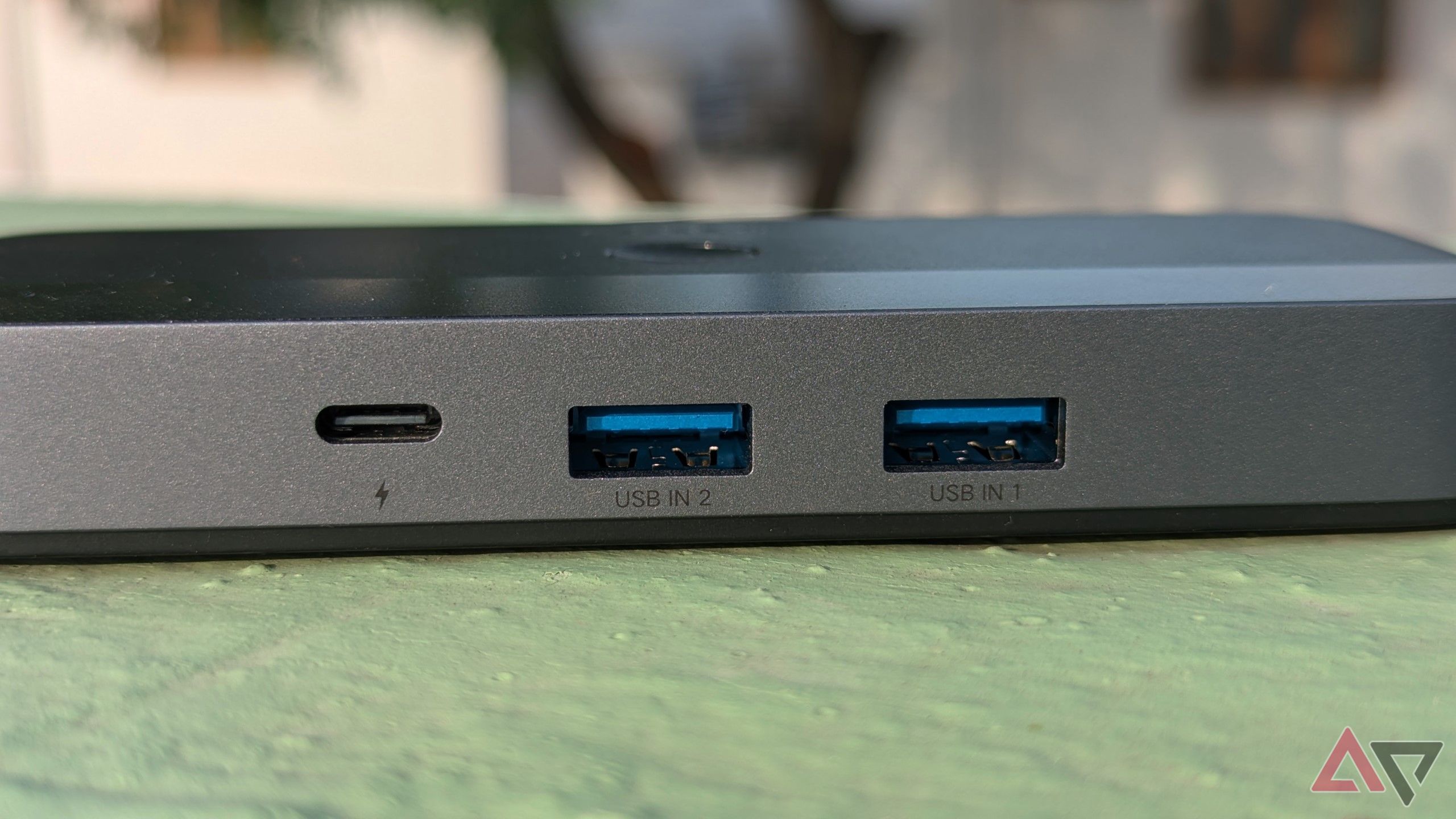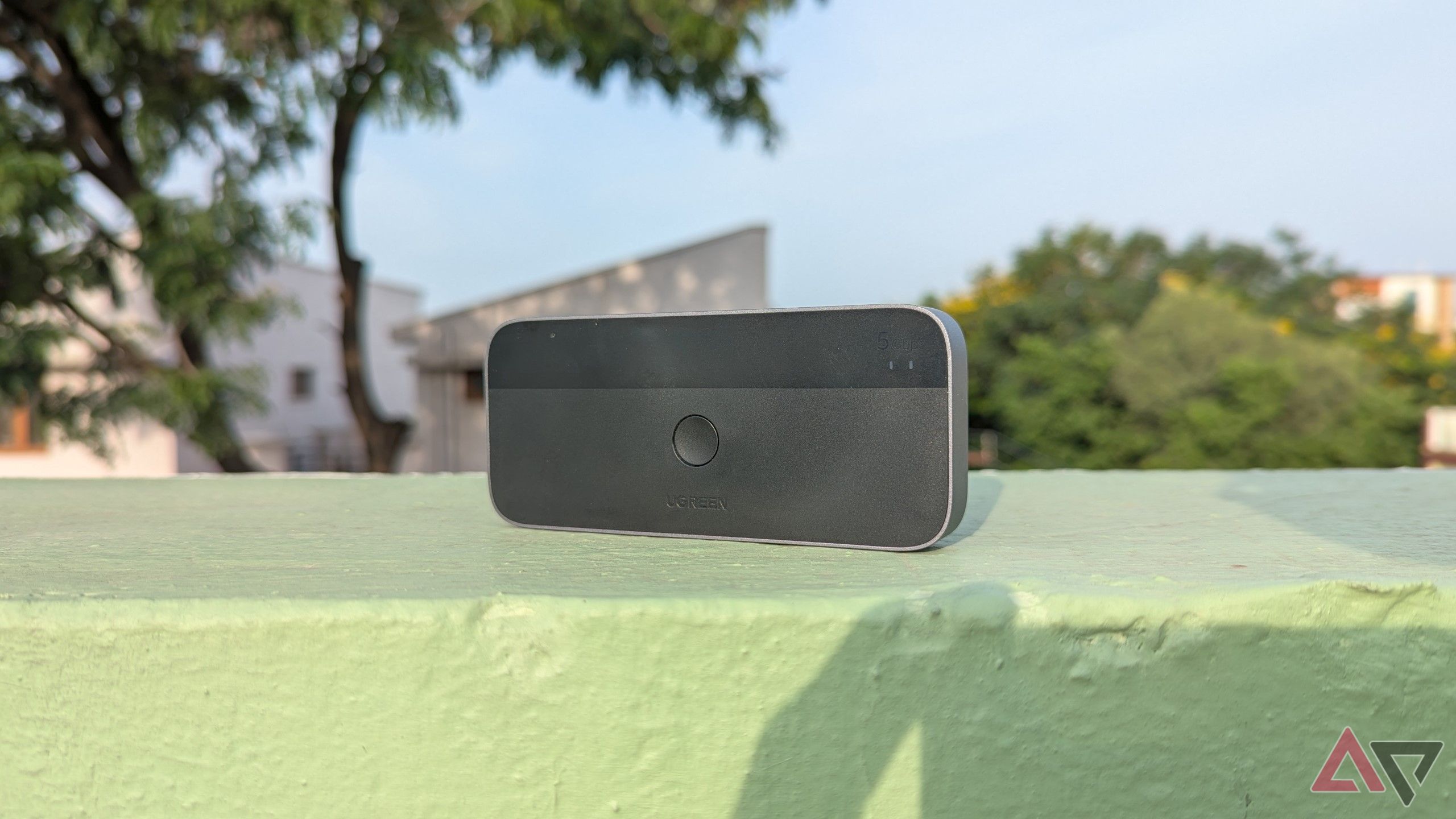Since the pandemic, I’ve switched to a hybrid setup with a full-tower desktop PC at home for gaming, CAD, and other intensive tasks, while a mini PC accompanies me with a pico-projector, peripherals, and travel charger when I’m out and about. I/O expansion isn’t a problem with the desktop, and the mini PC comes with its own dock, much like the ones available to expand I/O on desktops. However, I got tired of unplugging my mouse, keyboard, and macropad from one machine and connecting it to the other every time I wanted to switch.
Wireless peripherals are a good option to minimize this hassle, and a dock reduces it to just one cable you need to plug into the host PC. Still, for anyone else looking to stick with wired devices for any reason, a keyboard, video, and mouse (KVM) switch is what you need — a simple one-click button constantly hooked up to both your computers and all your peripherals that directs the input signal to the machine of your choice when clicked.
And that’s just my use case — you could use this to share connected I/O with a powerful Android tablet or a good Chromebook, too. Ugreen has a whole arsenal of these switches, and I picked one up to see if it makes life better. Let’s just say my back is already thanking me.
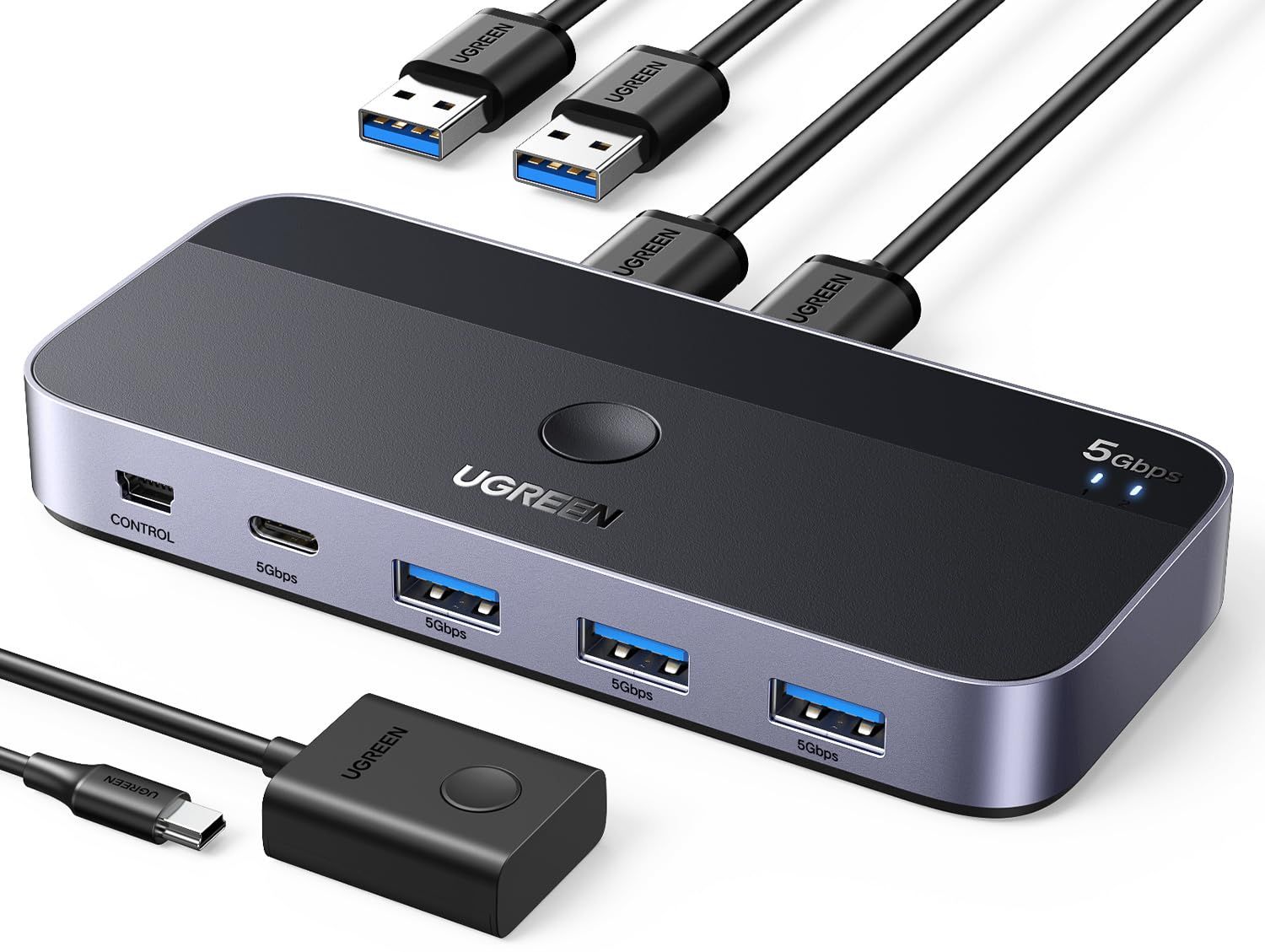

Staff pick
Ugreen USB 3.0 switch
USB switches take the labor out of sharing your favorite keyboard, mouse, printer, and other accessories with multiple computers or tablets. With USB 3.0 speeds, this model from Ugreen is no slouch, and it comes with a neat little remote so you can hide the main unit where all other cables are stashed. All that for $46 is pretty hard to argue with.
- Works reliably
- Premium materials and appearance
- Rubber feet offer sufficient grip
- Included remote key is wonderfully convenient
- Indicator LEDs placed close together
- Remote switch needs adhesive/feet
- Mushy button
Price, availability, and specifications
Plenty of variety to choose from
KVM switches, also called USB switches, are specified by the number of connectable host devices (in) and the number of accessories it can switch (out). Ugreen’s range on Amazon starts with a $23 two-in two-out switch capable of USB Gen 3 speeds and a $36 two-in four-out USB 2.0 switch. I bought and tested the newer $46 two-in-four-out model with USB Gen 3 capabilities, with USB-A connectors to connect to both computers.
You can also pick one USB-A and one USB-C cable for the host devices for $50 or go the dual USB-C route for newer machines at just $70. I’m not sure why USB-C cables are costlier despite offering the same transfer speeds, but all these switches come in silver or black, like the one I’m checking out. They are all consistently available for sale on Amazon US, with an additional 7% savings coupon applicable at checkout. Still, I’d suggest avoiding the USB 2.0 switch even if you’re on a tight budget because the product reviews on Amazon reveal stability issues. It also misses out on a remote switch included with newer models.
If you already have a USB hub but are tired of connecting it to your two computers intermittently, Ugreen also sells a $15 switch for sharing that hub with two PCs.
What’s good about the Ugreen USB 3.0 Switch?
Works as advertised
Ugreen’s KVM switch is technically a USB switch because it doesn’t handle video passthrough, but this tiny little device doesn’t break a sweat, functioning exactly as advertised. It features three USB-A ports on the front, one USB-C port that can handle power delivery, and a mini-USB port exclusively for connecting to the remote switch necessary for concealed installation.
This is quite unlike most USB docks, including Satechi’s Thunderbolt 4 dock, which features many more connectivity options. On the back face of the Ugreen switch, you’ll find labeled USB-A ports for connecting the switch to host PCs using the included detachable cables. My unit came with omnidirectional USB-A male-to-male cables, but it appears that models with one or more USB-C cables included terminate in USB-C at the switch end as well.
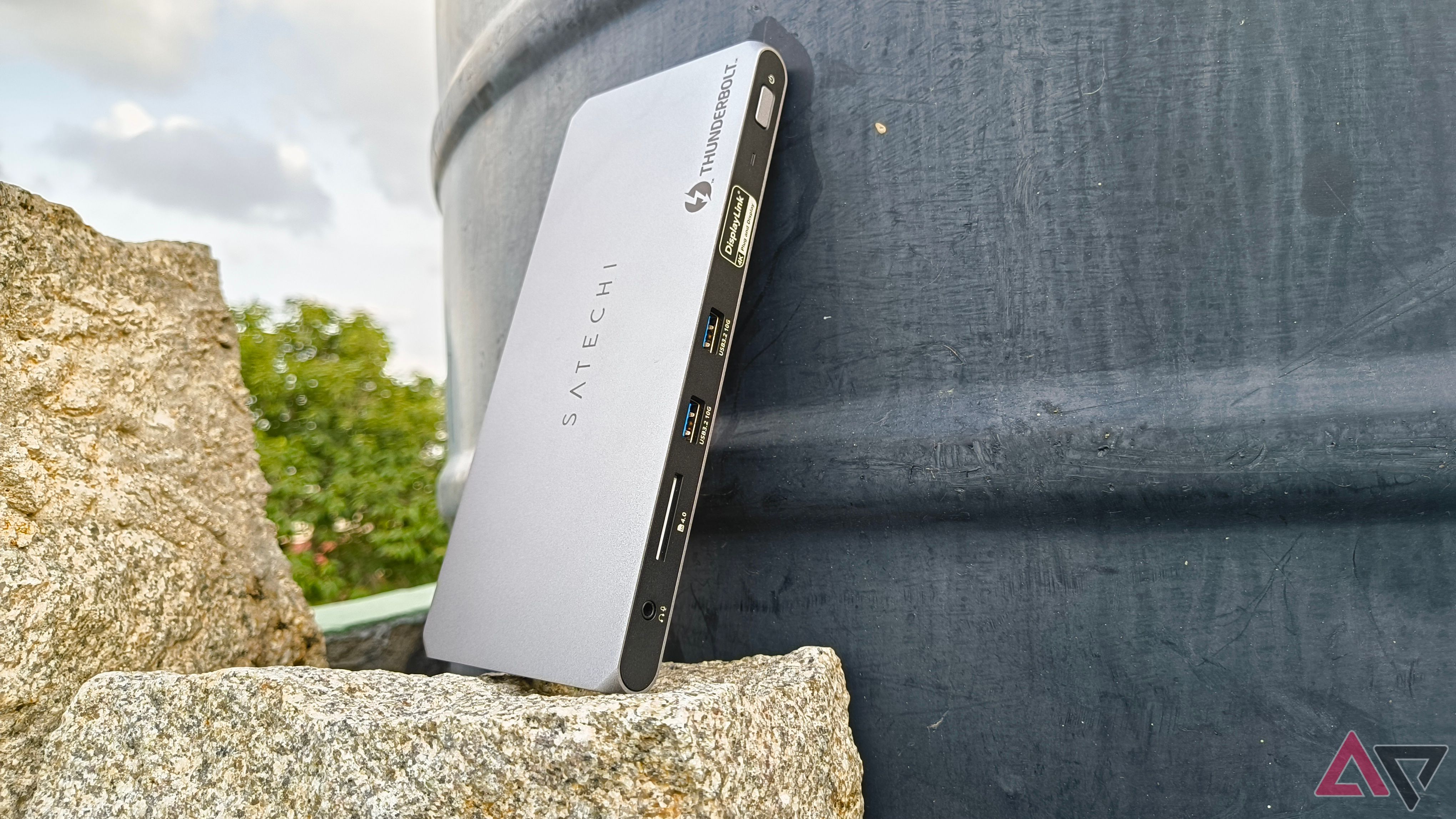
Related
Satechi’s new Thunderbolt 4 dock makes multi-display setups easy
For ChromeOS, Windows, and Mac
I was pleased to discover that the switch doesn’t need to be powered separately and is passively cooled. Plus, you don’t need to connect the switch to a power outlet for basic functionality. However, charging via USB can be slow, and Ugreen includes a type-C female port on the back for when you need to power the switch using a wall outlet or charge peripherals connected to it.
Labeled ports all around eliminate any confusion, and the only LED in the switch body isn’t distracting either. Despite the plastic shell, it didn’t get too hot. There’s no need for a cooling fan, and it didn’t feel cheap. The top and bottom are finished in glossy black plastic, while the sides have a metallic space gray finish on the black colorway. The silver colorway has a brighter steel-like finish on this wraparound piece.
The buttons on the main body and the remote extension are scooped and sufficiently tactile, making them easy to find even when tucked out of sight. However, it doesn’t sound or feel as premium to use as its outward appearance suggests. Branding is kept to a minimum, and I loved the rubber feet on the bottom, which prevented it from sliding around while connecting and disconnecting accessories.
On the performance front, the switch doesn’t disappoint — I didn’t encounter transfer speed bottlenecks, connection latency, switching delays, or other issues you might worry about. It works with Android, too, and doesn’t need drivers to get started.
What’s bad about the Ugreen USB 3.0 Switch?
That said, no product is without its flaws, and Ugreen’s USB switch has a few caveats. First, the device always defaults to the port marked USB in 1; it doesn’t remember which PC you were last connected to. Moreover, I found the indicator lights positioned too close together to tell which one was lit up. Clearer labeling or additional spacing would definitely be an improvement.
While the main switch body has rubber feet, the lighter remote switch tends to move around quite a lot. It really should’ve come with sticky tape or something on the back. Additionally, its connector should’ve been on the back to maintain a cleaner aesthetic and to help create a clear distinction between the I/O for the accessories and the PC. Lest I forget, the decision to use Mini USB in 2024 is also uncalled for.
Should you buy it?
Caters to your requirements
The market for USB switches is relatively niche, considering a minuscule percentage of people have multi-device setups that would benefit from shared peripherals. With a tablet-PC duo, most users would just settle for an independent keyboard case. Keyboards and mice with Bluetooth support are also viable alternatives, but if wired is how you like it, a USB switch is a quality-of-life accessory you desperately need.
However, you shouldn’t conflate this with a good USB or Thunderbolt dock designed to enhance the versatility of your device I/O, or a wired power station where you can connect multiple devices to recharge simultaneously. I’d like to reiterate that Ugreen’s models aren’t KVM switches in the truest sense because they don’t handle video input switching. So long as you’re well aware of what you’re getting into with this purchase, it’s hard to go wrong with Ugreen’s USB 3.0 Switch.


Staff pick
Ugreen USB 3.0 switch
A USB switch could add an unprecedented level of convenience to your everyday computing, and Ugreen’s newer models offer to do that without sacrificing speed or looking bad while at it. That makes these USB switches the perfect companion for multi-device setups
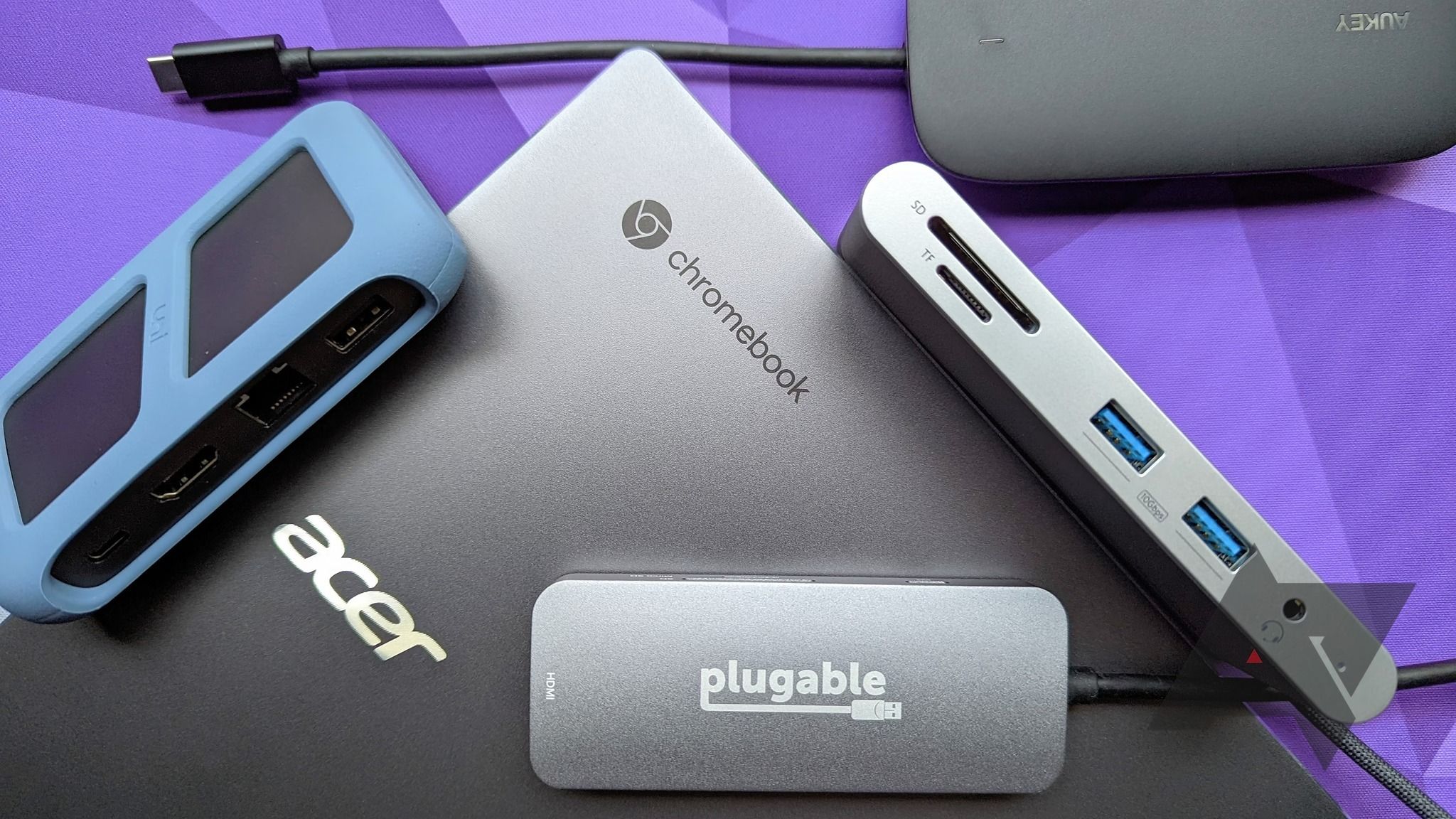
Related
Best USB-C hubs for Chromebooks in 2024
Add ports, flexibility, and functionality to your Chromebook with an excellent USB-C hub
Source link

